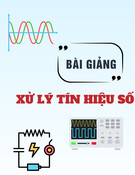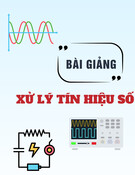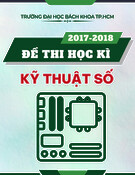
ISSN: 2615-9740
JOURNAL OF TECHNICAL EDUCATION SCIENCE
Ho Chi Minh City University of Technology and Education
Website: https://jte.edu.vn
Email: jte@hcmute.edu.vn
JTE, Volume 19, Special Issue 02, 2024
53
An Improved Control Method for Direct Torque Control Based on Sliding Mode
Control
Thi-Hong-Huong Ngo1* , Minh-Tam Nguyen2, Vinh-Quan Nguyen2
1Dong An Polytechnic, Vietnam
2Ho Chi Minh City University of Technology and Education, Vietnam
*Corresponding author. Email: ngothihonghuong1992@gmail.com
ARTICLE INFO
ABSTRACT
Received:
31/10/2023
This paper presents an improved method of direct torque control (DTC) for
three–phase asynchronous motors with squirrel cage rotors. The improved
method of DTC uses three sliding mode controllers to control torque and flux
independently. From simulation and experimentation in real time RT, using
Sim Power Systems of matlab-simulink through RT-LAB compiler,
hardware simulation algorithm in HIL- Hardware-in-the-Loop by OPAL-RT
device for the three-phase asynchronous induction motor, this is the new
algorithm presented in the article. The three-phase asynchronous induction
motor 1-hp, 150 rad/s with a three-phase three-level cascade inverter, the
results show the estimated speed and the good tracking speed according to
the value set at a frequency varying from the lowest 3 rad/s to the highest 150
rad/s, and the system remains stable when the stator and rotor resistance
changes up to 1.5 times the initial value in the presence of noise. Simulation
during execution, so simulation results and experimental results are very
consistent. On the other hand, using a multi-level inverter with the new PM
modulation algorithm increases the system's sustainability compared to the
two-level inverter used in previously published articles. The results also show
that using a sliding surface with a nonlinear function that has been proven to
be Lyapunov stable significantly reduces the moment chattering phenomenon
compared to previous algorithms using DTC control.
Revised:
17/11/2023
Accepted:
08/12/2023
Published:
28/04/2024
KEYWORDS
Direct Torque Control;
Sliding Mode Control;
Induction motor;
Nonlinear Systems;
Third-order cascade inverter.
Doi: https://doi.org/10.54644/jte.2024.1491
Copyright © JTE. This is an open access article distributed under the terms and conditions of the Creative Commons Attribution-NonCommercial 4.0
International License which permits unrestricted use, distribution, and reproduction in any medium for non-commercial purpose, provided the original work is
properly cited.
1. Introduction
For many years, the field of electric drive control of squirrel cage three-phase AC electric motor has
been researched by scientists, from classic theories to modern techniques [1]. Currently, asynchronous
motor control has achieved great developments. The improvements and perfections of the inverters have
partly met the strict requirements in automatic adjustment, and new features have been added to the
inverter to suit the high performamance control needs in practice.
The control of asynchronous motor speed has attracted the interest of many researchers. Control
methods have been proposed and verified by simulation such as the magnetic directional control method
FOC, classical DTC and improved DTC in which DTC uses carrier pulse width modulation [2] shows
many outstanding advantages and are commonly applied.
Although the DTC control method was discovered several decades ago, due to some limitations in
terms of equipment, it was not until recent years that practical applications were developed. The DTC
method is based on the direct effect of the voltage vector on the stator ring hook magnetic flux, changing
the stator magnetic flux vector state results in a direct change to the electromagnetic moment of the
motor. This is a simple control method, less dependent on motor parameters, fast and flexible moment
response [3].
Currently in the country, there are many studies using the DTC control method for three-phase
asynchronous motors based on sliding control applied in electric vehicles, but they all use two inverters
and intermittent sliding surfaces, so the current and moment are strongly motivated. The article uses a
third-level inverter and instead interrupts it with a nonlinear (tanh(s) function), so it improves the





![Tài liệu Đặc tính kỹ thuật dây đồng trần xoắn [C]](https://cdn.tailieu.vn/images/document/thumbnail/2025/20250808/trinhvanmotnt@gmail.com/135x160/21161754899208.jpg)
![Tài liệu Đặc tính kỹ thuật dây nhôm trần lõi thép bọc mỡ [ACKP]](https://cdn.tailieu.vn/images/document/thumbnail/2025/20250808/trinhvanmotnt@gmail.com/135x160/67971754899209.jpg)























